LIENS / LINKS :
un nouveau mammifère découvert : http://sciences.blog.lemonde.fr/page/3/
lémur bandro : http://www.flickr.com/photos/jordyevertse/7593097788/
ou Hapalémur bambou : http://fr.wikipedia.org/wiki/Hapalemur_alaotrensis
le lac aloatra vu du ciel : http://www.youtube.com/watch?v=rl8o50tXeNY
le boom des motoculteurs :
http://www.inter-reseaux.org/IMG/pdf_GDS48_p19_20_Motoculteurs_Mada.pdf
Je passe du vert au rouge , de l'humidité à la poussière. De la lumière dans l'ombre, de l'ombre à la lumière sans ombre .Autour du lac , la foret n'est plus !! Sacrifiée au nom de la population, des habitudes et cette facheuse habitude de ne manger que du riz. ? ..Mais un malgache sans riz est un homme sans vie...
Je traverse une terre dénudée dans un axe sud -nord, ici le lavaka est roi (érosion et déboisement créant une faille , un effondrement des sols)
. La route est pavée : je vous dis pas les vibrations !! Mes voisins du camion brousse ont l'habitude de ce trajet , ponctué d'une dizaine de villages . Nous coupons quelques fois la voie ferrée construite au début du 20e siècle par les colonisateurs français. Cette voie est bien plus plate que le trajet "fianarantsoa à manakara", le FCE, un vrai "toboggan" à comparer.
Par deux fois, le chauffeur doit se transformer en réparateur de direction non assistée, ABS sans option..
Peu de touristes s'aventurent par la, pourtant en km , cette région n'est pas très loin de la capitale...Par contre , elle a subi en 2008 , le cyclone de plein fouet..récoltes de riz détruites..
Je compte débusquer avec l'aide de la population locale des hapalémurs. Ces lémuriens bondissent de roseaux en roseaux sur les rives du lac Aloatra
.
J'arrive en fin d'après midi à la capitale régionale, Ambatondrazaka. Et ils ont pris cette facheuse habitude de placer la gare routière à 3 km du centre ...pour faire tourner le business , des taxis à deux ou quatre roues, des minibus et des rabatteurs ...Je perd encore ce précieux temps, l'aiguille tourne inexorablement.. Arrivé à pied au centre ville, je comprends et on me fait comprendre que je dois dormir ici...Mon but d'apercevoir les petites bêtes, les lémurs ,très matinales..s'amenuisent..
La lumière est magique ici, je retrouve les teintes,l'esprit, l'ambiance d'Ambalavao, une de mes bourgades préférées sur la RN 7 .
Je trouve facilement un hôtel, une chambre, un lit avec un sommier douteux
...des planches de bois très fines. La ville est animée, c'est un samedi , le jour du marché ..Peu d'endroits pour touristes, je dégote un restaurant. La patronne d'origine chinoise m'accueille avec un franc sourire . Ce qui est bien à Mada, c'est que l'on manger à toute heure.. y a toujours une marmite qui mijote lentement...Je finis par un yaourt à la papaye , vraiment délicieux...
Ma chambre se situe en hauteur : je peux contempler et entendre le travail des ouvriers dans leurs cases. Ils travaillent même la nuit jusqu'à épuisement ...
Au petit jour, je trouve le premier taxi brousse pour Andéba Gare à 25 km ...durée du trajet 2 heures ..pas d'asphalte ...le taxi me laisse au centre du village. Un marché longe la rue et la route principale
..tous les yeux sont rivés sur ma personne..
Moi, je recherche un chemin qui me permettra d'approcher le lac...Aloatra. L'étendue se réduit à son centre de plus en plus...mais je vois un "embarcadère " de pirogues . Elles sortent et partent en se faufilant dans une foret de roseaux...J'attends que l'un des pêcheurs me proposent de faire un tour sur le lac...Je suis assis au milieu de la coque creusée , mes 2 piroguiers s'extirpent de la vase collante pour flotter sur le liquide du lac...Les canards et leurs cousins sont présents , les pêcheurs remontent les filets, frappent sur la surface avec leur pagaie afin de sonner les poissons .. mais pas de lémurs bandro : trop tard et trop chaud pour les remarquer
.... Maintenant, je songe à mes derniers jours sur l'ile...
quelques infos sur la région :
La cuvette du lac est l'une des plus grandes zones rizicoles de Madagascar, avec plus de 80.000 ha de rizières. C'est l'une des rares zones du pays excédentaires en riz
avec une production annuelle en année normale de 200.000 tonnes, dont 80.000 tonnes en moyenne sont exportées chaque année vers Antananarivo et Toamasina.
L'origine de la formation du lac est due à un fossé d'effondrement qui se prolonge au Sud dans le couloir du Mangoro et au-delà de Moramanga
. Dans sa partie Nord-Est le fleuve
Maningory qui lui sert de déversoir et se jete dans l'océan Indien à 150 kms à l'Est. Ses parties Ouest et Sud sont constituées de marécages et de vastes étendues de rizières, tout le reste étant le domaine de basses montagnes( point culminant: 1445 m) qui subissent
une érosion intense due au déboisement et qui entraîne l'ensablement et le rétrécissement progressif du Lac. Dans la partie Est il y a toutefois la Réserve Naturelle de Zahamena encore couverte de forêt primaire et appartenant au domaine climatique de la côte Est, chaud et très pluvieux.
Selon la tradition orale, Ambatondrazaka a été fondée par Randriambololona et ses trois enfants :
Raseheno, Ramiangaly, et Razaka. Ils s’y établirent vers la fin du XVIIIe siècle.
La ville doit son nom à Razaka qui, sans prospérité, a adopté les enfants de ses deux sœurs en prêtant serment devant une pierre levée (en malgache « Vato ») à Andohatanjona
. Une reconstitution de cette pierre levée a été élevée sur le même endroit en 1976.
ENGLISH VERSION :
I turn from green to red, moisture to dust. The light in the shadow of the shadow in the light without shadow.Around the Lake, the forest is more! Sacrificed on behalf of the people, habits and this annoying habit of not eating of rice. ? ..But a Malagasy without rice is a man with no life...
I
crossed a land stripped in a South - North axis, here the lavaka is
King (erosion and deforestation creating a loophole, a collapse of
soils). The road is paved: I not tell you the vibration! My neighbors of the Bush truck have a habit of this journey, punctuated by a dozen villages. We cut a few times the railway built in the early 20th century by the french colonizers
. This way is much flatter than the "fianarantsoa to manakara" journey, the CFE, a true "slide" to compare.
Twice, the driver must become non power steering repair, ABS without option...Few tourists venture out by the, yet in miles, this region is not far from the capital...On the other hand, it suffered in 2008, cyclone hit...rice crops destroyed...
I intend to flush out with the help of the local population of the bamboo lemurs. These lemurs bound reeds in reeds on the banks of lac Aloatra.
I arrive late afternoon at the regional capital, Ambatondrazaka. And
they took this annoying habit to place the bus station 3 km from the
centre
.. .to turn the business, taxis in two or four wheels, the minibus
and touts...I still lose this precious time, the needle turns inexorably... Come walk in the city centre, I understand and it makes me understand that I have to sleep here...My goal to see small animals, lemurs, very morning...are dwindling...
The light is magical here, I find the hues, the spirit, the atmosphere of Ambalavao, one of my favorite towns on the RN 7.
I find easily a hotel, a room, a bed with a box spring doubtful... the planks of wood very fine. The city is lively, it is Saturday, the day of the market...Few places for tourists, I got a restaurant. The patron saint of Chinese origin greets me with a big smile. What is good to Mada, is that you eat at any time... There's always a pot simmering slowly...I end up a papaya yogurt, really delicious
...
My room is located in height: I can see and hear the work of workers in their boxes. They work even at night until exhaustion...
At daybreak, I find the first Bush for Andeba station taxi 25 km.. .remaining of the 2 hours journey...not asphalt.. .the taxi leaves me in the centre of the village. A market along the street and the main road...all eyes are riveted on my person...
Me, I search a path that will allow me to approach the Lake...Aloatra. The scope is reduced to its centre more... but I see a "Pier" of canoes
. They come out and start sneaking in a forest of reeds...I expect that one of the fishermen offer me a ride on the Lake...I'm sitting in the middle of the inground hull, my 2 pirogues coax sticky mud to float on the Lake liquid...Ducks and their cousins are present, the fishermen back nets, hit on the surface with their paddle in order to sound fish... but not lemurs bandro: too late and too hot to notice... Now, I am thinking of my last days on the island...
some info about the region:
The basin of the Lake is one of the largest rice-growing areas of Madagascar, with more than 80,000 ha of rice fields. This is one of the few areas of the country surplus in ricewith
an annual output in the normal year of 200,000 tonnes, of which 80,000
tonnes on average are exported annually to Antananarivo and Toamasina
.
The
origin of the formation of the Lake is due to a rift that extends South
into the corridor of the Mangoro and beyond Moramanga. In the Northeast the river partManingory, which serves as a spillway and is thrown into the Indian ocean at 150 kms to the East. Its
parts West and South consist of swamps and vast expanses of rice
paddies, the rest is the area of low mountains (highest point: 1445 m)
undergoingintense erosion due to deforestation and which causes siltation and gradual shrinkage of the Lake. In
the East side there is the Reserve natural of Zahamena still covered in
primary forest and in the climate of the East Coast, warm and very
rainy domain.
According to oral tradition, Ambatondrazaka was founded by Randriambololona and her three children:Raseheno, Ramiangaly, and Lisa
. They settled there toward the end of the 18th century.The city owes its name to rain which, without prosperity, adopted the children of two sisters taking oath before a stone thrown.
Lac Aloatra
Sunday, October 20, 2013
 Ambatondrazaka, Alaotra Mangoro, Madagascar
Ambatondrazaka, Alaotra Mangoro, Madagascar
Other Entries
-
15Le train mythique
Sep 2129 days prior Fianarantsoa, Madagascarphoto_camera21videocam 0comment 0
Fianarantsoa, Madagascarphoto_camera21videocam 0comment 0 -
16Manakara, balade en pirogue
Sep 2228 days prior Manakara, Madagascarphoto_camera13videocam 0comment 0
Manakara, Madagascarphoto_camera13videocam 0comment 0 -
17Lémuriens et déforestation
Sep 2327 days prior Fianarantsoa, Madagascarphoto_camera28videocam 0comment 0
Fianarantsoa, Madagascarphoto_camera28videocam 0comment 0 -
18Les steppes du sud
Sep 2426 days prior Ranohira, Madagascarphoto_camera27videocam 0comment 0
Ranohira, Madagascarphoto_camera27videocam 0comment 0 -
19Sarodrano , un bout du monde..
Sep 2624 days prior Anakao, Madagascarphoto_camera34videocam 0comment 0
Anakao, Madagascarphoto_camera34videocam 0comment 0 -
20Saint Augustin
Sep 2723 days prior Anakao, Madagascarphoto_camera16videocam 0comment 0
Anakao, Madagascarphoto_camera16videocam 0comment 0 -
21Anakao
Oct 0119 days prior Anakao, Madagascarphoto_camera25videocam 0comment 0
Anakao, Madagascarphoto_camera25videocam 0comment 0 -
22Tuléar, "mouillez là"
Oct 0218 days prior Toliara, Madagascarphoto_camera6videocam 0comment 0
Toliara, Madagascarphoto_camera6videocam 0comment 0 -
23Le peuple vézo
Oct 0317 days prior Toliara, Madagascarphoto_camera9videocam 0comment 0
Toliara, Madagascarphoto_camera9videocam 0comment 0 -
24Au pied de l'Andringitra
Oct 0416 days prior Ambalavao, Madagascarphoto_camera27videocam 0comment 0
Ambalavao, Madagascarphoto_camera27videocam 0comment 0 -
25A la conquête du Pic Bobby
Oct 0515 days prior Ambalavao, Madagascarphoto_camera51videocam 0comment 0
Ambalavao, Madagascarphoto_camera51videocam 0comment 0 -
26La vallée du Tsaranoro
Oct 0614 days prior Ambalavao, Madagascarphoto_camera10videocam 0comment 0
Ambalavao, Madagascarphoto_camera10videocam 0comment 0 -
27En route vers la soie
Oct 0713 days prior Ambositra, Madagascarphoto_camera15videocam 0comment 0
Ambositra, Madagascarphoto_camera15videocam 0comment 0 -
28Le train Dia Soa
Oct 0713 days prior Tamatave, Madagascarphoto_camera25videocam 0comment 0
Tamatave, Madagascarphoto_camera25videocam 0comment 0 -
29La route de l'impossible , la RN 5
Oct 0911 days prior Soanierana Ivongo, Madagascarphoto_camera6videocam 0comment 0
Soanierana Ivongo, Madagascarphoto_camera6videocam 0comment 0 -
30Ile Sainte Marie
Oct 119 days prior Lokintsy, Madagascarphoto_camera45videocam 0comment 0
Lokintsy, Madagascarphoto_camera45videocam 0comment 0 -
31Encore un peu de cocotiers et de sable blanc...
Oct 155 days prior Mahambo, Madagascarphoto_camera28videocam 0comment 0
Mahambo, Madagascarphoto_camera28videocam 0comment 0 -
32La réserve de Vohimana
Oct 173 days prior Andasibe, Madagascarphoto_camera19videocam 0comment 0
Andasibe, Madagascarphoto_camera19videocam 0comment 0 -
33Lac Aloatra
Oct 20 Ambatondrazaka, Madagascarphoto_camera20videocam 0comment 0
Ambatondrazaka, Madagascarphoto_camera20videocam 0comment 0 -
34Les taxis brousses
Oct 299 days later Antananarivo, Madagascarphoto_camera9videocam 0comment 0
Antananarivo, Madagascarphoto_camera9videocam 0comment 0

 Ambatondrazaka, Alaotra Mangoro, Madagascar
Ambatondrazaka, Alaotra Mangoro, Madagascar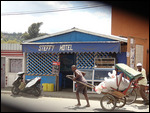
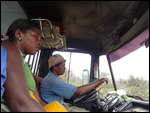
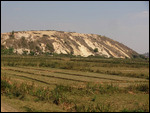
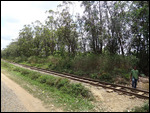
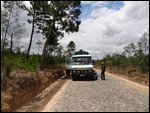
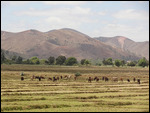
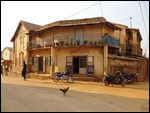
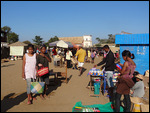
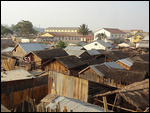
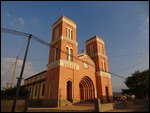
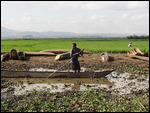
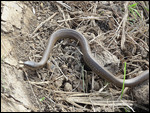
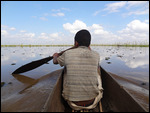

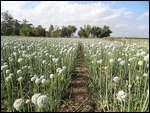
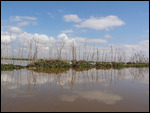

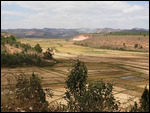
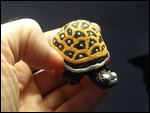
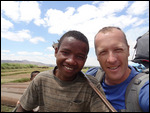

2025-05-22